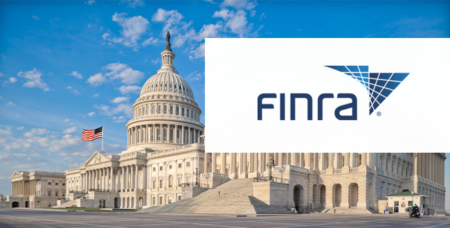5 Don’ts When Choosing Your Next Archive
Purchasing an archive today is not as straightforward as it was 15 years ago. What’s changed, you might ask? Well, data. It's become incredibly valuable. Plus, it’s outpaced old technologies, growing at an explosive rate and a velocity that is hard to keep up with. Now, it's not just about retaining and accessing data, but also analyzing, indexing, searching, automating, gaining insights, and enriching it. And, of course, it must be secure, resilient, and scalable to keep up with your business.
Why it matters
The need for proper data storage is both inevitable and necessary for regulated businesses. Financial services firms need to choose a purpose-built archive to meet ever-changing regulatory demands.
Don't get stuck with yesterday's technologies. Here's five big don’ts when choosing your next archive.
1. Don't risk efficiency, as time is money
Your archive should offer exceptional search and accessibility performance. Check if it can handle any type of data for storage, search, and export. Consider how quickly you can retrieve data from the archive. Today, context-aware archiving is vital. This means preserving content, metadata, and event-based information in its native format. This allows you to thread events, providing true context-aware archiving, which is especially important for interactive conversations and popular collaboration platforms. When you must review millions of data points, the math is simple time and resource savings.
2. Don't risk scalability, as data is exploding
To handle high volumes of data, your archive must be scalable. It should be able to process petabyte-scale data without sacrificing speed, exporting millions of records per second. A wise investment is an archive built with cloud-native architecture design and elastic compute resources that can grow with your enterprise needs.
3. Don't risk security, as your archive must be resilient
Its value demands it is impenetrable. This means more than just meeting SEC requirements for WORM and storing data in immutable format. It also means meeting strict SLAs and uptime requirements. Your archive should encrypt data both in-transit and at-rest, provide role-based access controls, and allow you to bring your own key. The data in the archive must also have four 9s availability. One way to achieve this is through "triple-active" deployment, which runs three availability zones simultaneously. This approach eliminates the need for traditional disaster recovery sites and reduces recovery time objectives (RTOs) and recovery point objectives (RPOs) to near zero.
4. Don’t risk integration, as your archive must be able to work with downstream processes
If your archive can’t integrate with other tools in your workflows, it will disrupt critical business functions, wasting time and money. Your archive should be able to enrich, index, and store data in context, with APIs for export and integration with other tools. This enables seamless integration with other enterprise applications, third-party review products, and business intelligence tools. No more manual processes!
5. Don’t assume all data is equal, it will cost you!
There are significant costs to storing data. Implementing an archive with intelligent data tiering for data lifecycle management saves time and money by storing only necessary data on expensive storage space. With tools like granular retention policies and a policy engine that allows you to quickly search data based on its depth or age, you save valuable time and increase efficiency.
Don’t just take our word for it
We believe our value as a leader is emphasized in the work we do for our customers and our dedication to staying ahead of regulatory and technological demands. Forrester recently published a Smarsh-commissioned Total Economic Impact Study, which dives into how Smarsh customers have achieved and exceeded their goals. See for yourself what Smarsh can do.
Share this post!
Smarsh Blog
Our internal subject matter experts and our network of external industry experts are featured with insights into the technology and industry trends that affect your electronic communications compliance initiatives. Sign up to benefit from their deep understanding, tips and best practices regarding how your company can manage compliance risk while unlocking the business value of your communications data.
Ready to enable compliant productivity?
Join the 6,500+ customers using Smarsh to drive their business forward.




Subscribe to the Smarsh Blog Digest
Subscribe to receive a monthly digest of articles exploring regulatory updates, news, trends and best practices in electronic communications capture and archiving.
Smarsh handles information you submit to Smarsh in accordance with its Privacy Policy. By clicking "submit", you consent to Smarsh processing your information and storing it in accordance with the Privacy Policy and agree to receive communications from Smarsh and its third-party partners regarding products and services that may be of interest to you. You may withdraw your consent at any time by emailing [email protected].
FOLLOW US